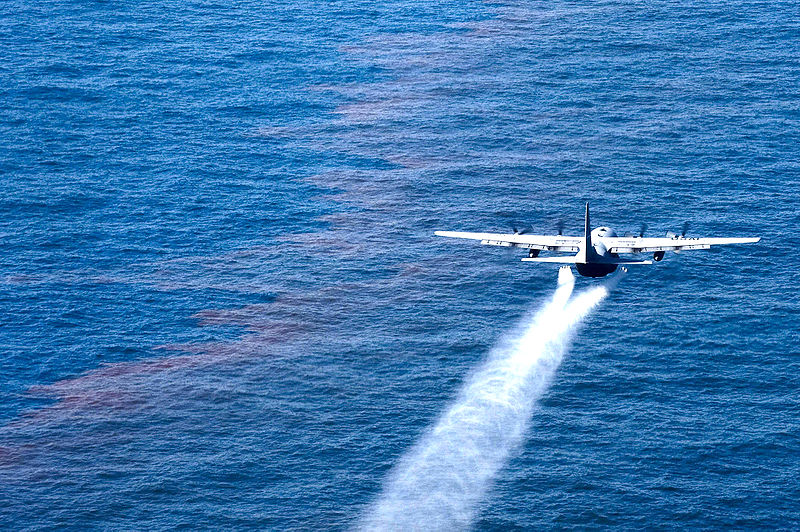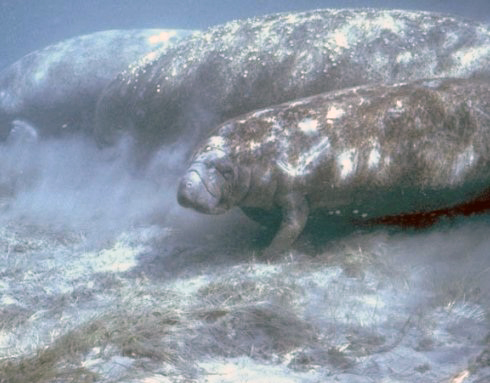 Last week I received a disturbing call from one of our suppliers of Florida Cultured live rock. The companies dealing in the aquaculture business in Florida are being advised to move as much of their stock out of the water as possible as a precaution in the event oil spreading into the coastal waters where the rock is placed to culture. It was a call I’ve been dreading…though the area has not yet been impacted by the massive spill, the impending possibility of the muck reaching the pristine waters makes me sick.
Last week I received a disturbing call from one of our suppliers of Florida Cultured live rock. The companies dealing in the aquaculture business in Florida are being advised to move as much of their stock out of the water as possible as a precaution in the event oil spreading into the coastal waters where the rock is placed to culture. It was a call I’ve been dreading…though the area has not yet been impacted by the massive spill, the impending possibility of the muck reaching the pristine waters makes me sick.
The oil spill in the Gulf of Mexico, off the coast of Louisiana, has now been determined to be the largest oil spill in US history, topping the disaster in Alaska in 1989 by Exxon. As BP continues to try and plug the hole, nearly a mile below the surface, the questions continue to flow with no real answers. No one knows exactly how much oil has spilled out or how much more will in the coming weeks. BP gives us numbers, but no specific amounts can be agreed upon.
Most recently, BP has tried the “Top Kill” method to stop the flow of oil. The execution of the method was not so easy. A direct injection of mud into the oil lines was supposed to help slow the oil flow, thus allowing them to pump concrete into the pipe, sealing the pipe and cutting the flow off completely. Despite optimism, this too has failed to seal the fountain of oil.
Estimates from various organizations guess between 7 million and 10 million gallons of oil have already flowed into the Gulf. Oil is washing ashore in Louisiana, where the wetlands are going to take a beating. The wildlife faces certain disaster despite our efforts to save them.
 Adding man made chemicals into a fragile ecosystem does not sound like a great fix to me either. BP has been releasing chemical dispersants since the beginning of the spill in April. These chemicals have not had long-term tests to determine their affects on sea life. It has been reported that over 28,000 gallons of the chemicals have been spread throughout the Gulf. These dispersants are added to help break up the oil into clumps, causing them to sink to the bottom of the ocean. They work much like some clarifiers used in aquariums, but once the oil sinks, there isn’t a gigantic siphon tube to suck up the oil at the bottom of the gulf, or no way to undo the harm already done to fish and wildlife. BP stands by effectiveness and safety of these products despite pressure from environmentalists and even the EPA. Through bioaccumulation, we maybe consuming this chemical in the future from the fish we eat and by absorbing directly through contaminated water. It took years for us to find out the long term affects of DDT exposure, for example. Hopefully this dispersant doesn’t become a modern day DDT.
Adding man made chemicals into a fragile ecosystem does not sound like a great fix to me either. BP has been releasing chemical dispersants since the beginning of the spill in April. These chemicals have not had long-term tests to determine their affects on sea life. It has been reported that over 28,000 gallons of the chemicals have been spread throughout the Gulf. These dispersants are added to help break up the oil into clumps, causing them to sink to the bottom of the ocean. They work much like some clarifiers used in aquariums, but once the oil sinks, there isn’t a gigantic siphon tube to suck up the oil at the bottom of the gulf, or no way to undo the harm already done to fish and wildlife. BP stands by effectiveness and safety of these products despite pressure from environmentalists and even the EPA. Through bioaccumulation, we maybe consuming this chemical in the future from the fish we eat and by absorbing directly through contaminated water. It took years for us to find out the long term affects of DDT exposure, for example. Hopefully this dispersant doesn’t become a modern day DDT.
Video of the oil after being exposed to the dispersants, depicts a grim scene beneath the surface. A brown haze, almost complete darkness in spots, as the oil sinks beneath the surface. Scientists can see the oil on the surface and track where it is moving, but with the oil below the surface now, no one is sure where it is being pushed to via underwater currents. Oil may show up in locations days, months, or even years down the road, nowhere near the accident.
 Via currents through the Gulf of Mexico, oil may make it to the western shores of Florida and the Keys in the coming weeks. The Florida Keys are home to one of the largest coral reefs in the entire Caribbean. Already hit hard by a severe cold this past winter, the coral reefs in Florida have been severely stressed and damaged. Oil is the last thing that this ecosystem needs to deal with. Other places in the Caribbean and along the U.S. coast are not safe either; Cuba, Jamaica, and Haiti, and eventually the Southeastern coastal states need to keep an eye open for oil to appear on their shores and surrounding waters and reefs.
Via currents through the Gulf of Mexico, oil may make it to the western shores of Florida and the Keys in the coming weeks. The Florida Keys are home to one of the largest coral reefs in the entire Caribbean. Already hit hard by a severe cold this past winter, the coral reefs in Florida have been severely stressed and damaged. Oil is the last thing that this ecosystem needs to deal with. Other places in the Caribbean and along the U.S. coast are not safe either; Cuba, Jamaica, and Haiti, and eventually the Southeastern coastal states need to keep an eye open for oil to appear on their shores and surrounding waters and reefs.
We received 500 pounds of oil-free, freshly-harvested Cultured Florida live rock last week, in hopes that it won’t be our last. The aquaculture program is still relatively new in Florida, with more companies leasing coastal waters in hopes of relieving the pressure of live rock collection and reef destruction in Pacific regions. This would be yet another setback to our economy and the environment. Caribbean fish and invert import has just gotten back to normal from the Haiti earthquake, I’m not sure how quickly, if ever, it will revive itself from a disaster of this type and magnitude. Meanwhile, we all watch helplessly and with baited breath to see how it all unfolds.
 That Fish Blog – Aquarium Advice and Information
That Fish Blog – Aquarium Advice and Information


This is so sad, i really feel for anyone involved with this oil spill. Fish and water wildlife will be effected for years.
This is so incredibly ridiculous. What ineptitude from these people from BP and the government. How could something like this be so out of control? I pray the marine life and other wildlife will be harmed as least as possible and will be able to recover completely.